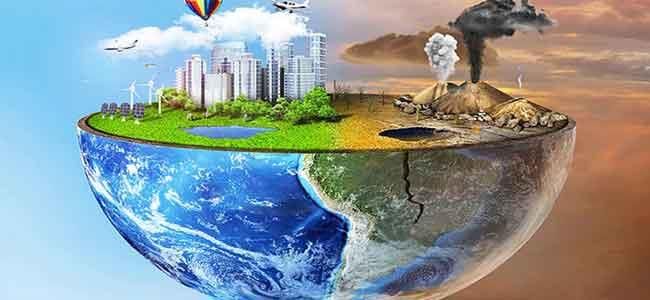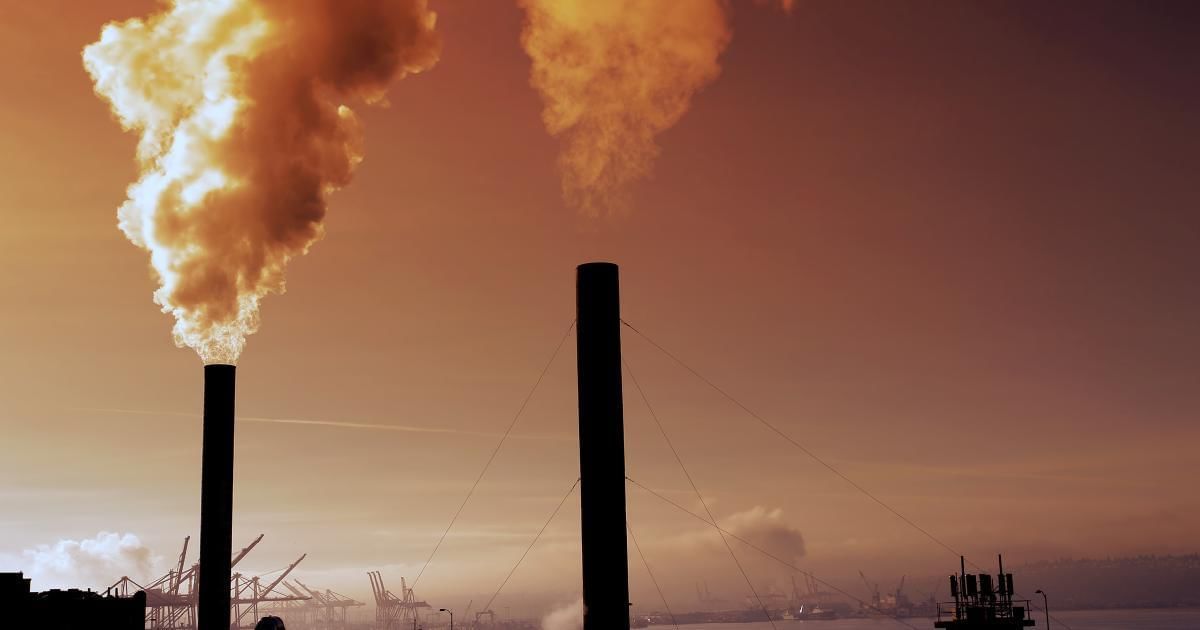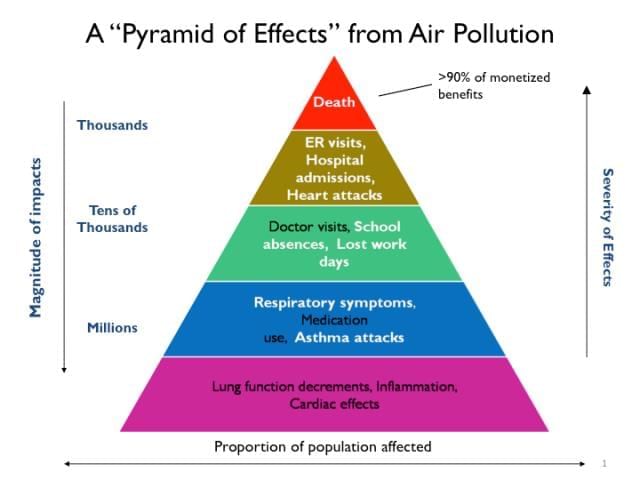Our Environment and Pollution Chapter Notes | Eureka Plus Class 5: Book Solutions, Notes & Worksheets PDF Download
| Table of contents |

|
| Introduction |

|
| Pollution and the Environment |

|
| Air Pollution |

|
| Effects of Air Pollution |

|
Introduction
Environment refers to the surroundings of a living thing. Our environment consists of living, non-living, and often human-made things. Living Components include plants, animals, human beings, and other living organisms. Non-Living Components include soil, air, water, and light. Human-Made Components include roads, buildings, bridges, dams built on rivers, and motor vehicles.
- The components of an environment determine the nature of that environment. For example, a sandy desert has a different environment than a dense forest because of the different components present in each.
- The well-being of all living things depends on the environment of the region. Therefore, it is crucial to keep the natural environment undisturbed.
Pollution and the Environment

- Human activities have contaminated water, air, and land, leading to widespread pollution. Waste from households, farms, and factories has tainted the air, land, rivers, lakes, and even oceans. This pollution harms the environment. Substances that are harmful and pollute the environment are called pollutants.
- Every living organism requires a specific type of environment to survive. For instance, coconut trees thrive in warm coastal areas, while snow leopards can only live in the cold Himalayan mountains. When the environment is harmed, all kinds of animals and plants living in that area are affected, and many may even die. Pollution not only damages the environment but also harms the life within it. Additionally, it can damage metal objects, bridges, and monuments. Let’s learn more about pollution.
Air Pollution

The air is polluted by harmful gases and smoke released from factories and vehicles. This smoke contains tiny particles of ash, coal, metals, and toxic chemicals, which are the main pollutants in the air. When fuels like kerosene, coal, diesel, petrol, and wood are burned, they produce smoke that is high in carbon dioxide, further polluting the air.
- Smoke from Factories and Vehicles: Smoke from factories and vehicles is a major source of air pollution. This smoke contains fine particles of ash, coal, metals, and toxic chemicals.
- Burning of Fuels: Fuels such as kerosene, coal, diesel, petrol, and wood emit smoke when burned. This smoke is rich in carbon dioxide, contributing to air pollution.
- Burning of Plastics, Rubber, and Firecrackers: When materials like plastics, rubber, clothes, and firecrackers are burned, they produce harmful smoke that pollutes the air.
- Gases from Garbage Dumps: Gases emitted from garbage dumps also contribute to air pollution.
 |
Download the notes
Chapter Notes: Our Environment and Pollution
|
Download as PDF |
Effects of Air Pollution

Air pollution has harmful effects on both plants and animals. It can damage our lungs and lead to diseases like asthma. Additionally, air pollution can harm the eyes and skin of people living in affected areas.
Global Warming
- The burning of coal, kerosene, diesel, and petrol, primarily by industries and motor vehicles, releases large amounts of carbon dioxide (CO₂) gas into the atmosphere. As a result, the concentration of carbon dioxide in the air is continuously increasing. Scientists believe that this constant rise in carbon dioxide levels is causing the Earth’s average temperature to gradually increase.
- This gradual increase in the Earth’s temperature is known as global warming. If global warming continues beyond certain limits, it will disrupt the Earth’s environment and harm all forms of life, including humans. Therefore, it is crucial for all of us to take steps to reduce the amount of carbon dioxide being produced.
What can we do to reduce carbon dioxide emissions?
- Grow more plants in your surroundings. All kinds of plants absorb carbon dioxide to make their own food.
- Conserve electricity by not leaving fans, bulbs, or any other electric appliances "ON" when they are not in use.
Water Pollution
Water becomes polluted when harmful substances are mixed with it. The main sources of water pollution include chemical waste from industries, household wastewater, and runoff from agricultural fields.
Human Activities that Contribute to Water Pollution
- Allowing wastewater from homes to flow into rivers and streams.
- Factories releasing chemical waste into water bodies.
- Using chemical fertilizers in agricultural fields that mix with rainwater and flow into water bodies.
- Discharging untreated sewage into water bodies.
Effects of Water Pollution
- Water polluted by plant and animal waste carries germs which can make us sick.
- Water polluted by waste from factories has harmful chemicals that can also make us very sick.
- Polluted water cannot be used for drinking or any other purpose. It cannot be used to grow crops.
- Polluted water often kills fish and other aquatic animals. It also affects the plants in and around the water bodies. When polluted water flows over land, it causes land pollution.
What can we do to reduce water pollution?
- We should reduce the use of chemicals and detergents in our homes.
- We should not throw plastic and other waste on land or into water bodies.
Land Pollution
- Dumping chemical waste, glass and plastics into the soil causes land pollution. Land is polluted mainly by waste generated in industries, hospitals and households.
- Some materials, such as plastics and glass, do not break down naturally. Things made from such materials remain in water and on land for many years. Such wastes pollute land and water.
- On the other hand, things such as fallen leaves, dead plants, pieces of paper and wood when left on land break down naturally in a short period of time. Such wastes do not pollute land or water.
Effects of Land Pollution
- Land pollution spoils soil and reduces crop production. Polluted land can pollute water bodies.
- This occurs when harmful substances mix with rainwater and flow into lakes and rivers.
Land Pollution
Land pollution occurs when harmful substances are added to the land, making it dirty and unsafe. This can happen through improper disposal of waste, chemical spills, and littering. To keep our land clean and safe, it is important to manage waste properly and prevent harmful materials from contaminating the soil.
Ways to Reduce Land Pollution
- Proper Waste Disposal: Waste materials should be disposed of in a clean and safe manner to keep the environment clean.
- Avoid Dumping Plastics and Glass: Items made of plastic and glass should not be dumped directly on the land.
- Recycling: Waste such as used paper, plastic, and metal objects should be recycled to make new products. We should collect such waste and sell it to a scrap dealer.
Noise Pollution
Noise pollution is caused by loud, distracting, and continuous sounds. It can also lead to serious health problems. Some common sources of noise pollution include:
- Noise from motor vehicles, trains, and aircraft
- Loud and continuous honking by vehicles
- Unchecked use of loudspeakers or music played at very high volume
- Bursting firecrackers
- Loud noise emitted by machines in factories
Effects of Noise Pollution
Noise pollution can be distracting and harmful, leading to various health issues such as:
- Stress
- Fatigue
- Poor concentration levels
- Sleep disorders
- Irritability
- Heartburn and indigestion
- High blood pressure
- Loss of hearing
Loud noises can also frighten animals.
Ways to Reduce Noise Pollution
- Speak Softly in Public: Avoid talking loudly in public places to reduce noise levels.
- Avoid Honking: Use your vehicle horn only when necessary to minimize noise from honking.
- Keep Music Volume Down: Avoid playing loud music at functions, parties, and weddings to prevent noise pollution.
- No Firecrackers: Refrain from bursting firecrackers to reduce noise pollution, especially during festivals.
FAQs on Our Environment and Pollution Chapter Notes - Eureka Plus Class 5: Book Solutions, Notes & Worksheets
| 1. What is air pollution and what are its main causes? |  |
| 2. How does air pollution affect human health? |  |
| 3. What are the effects of air pollution on the environment? |  |
| 4. What steps can be taken to reduce air pollution? |  |
| 5. How can individuals contribute to reducing air pollution? |  |















